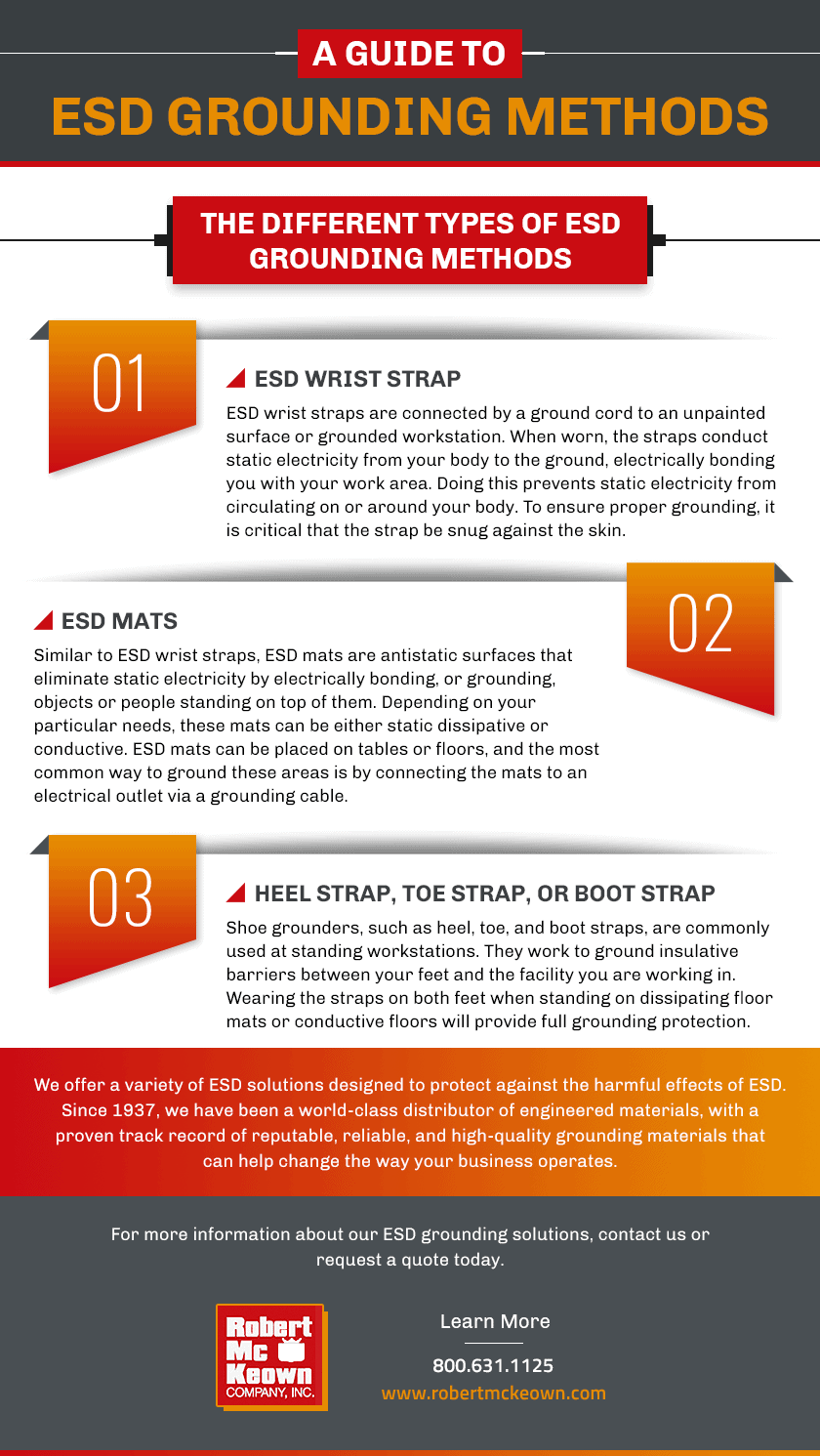A Guide to ESD Grounding Methods
In an ever-so technological world, working with highly sensitive electronic devices has become increasingly common across a range of businesses. With that comes certain dangers, such as electrostatic discharge (ESD). ESD refers to the sudden flow of electricity between two electrically charged objects caused by instances such as a short or breakdown.
ESD poses life-threatening dangers to workers; therefore, it is crucial to implement the proper ESD grounding methods. ESD grounding not only improves workplace safety but it’s also an important component of static control.
Developing ESD Grounding Requirements
Developing a widespread policy on how employees should ground themselves while working can be an invaluable step in boosting workplace safety and preventing product damage. Determining ESD grounding requirements for your facility depends on where grounding is needed. The policy could cover areas such as work benches, manufacturing floors, packing and shipping centers, research and development labs, clean rooms, and more.
Other key factors to consider when determining the ESD grounding requirements of a facility include the type of work taking place and the size of the workspace. For example, smaller companies can typically follow basic ESD grounding requirements while larger companies may need to implement stricter guidelines.
The Different Types of ESD Grounding Methods
There are several ESD grounding methods companies can use to protect products and personnel. Implementing the following precautions ensures worker safety when installing or handling electrostatic-sensitive devices:
ESD Wrist Strap
ESD wrist straps are connected by a ground cord to an unpainted surface or grounded workstation. When worn, the straps conduct static electricity from your body to the ground, electrically bonding you with your work area. Doing this prevents static electricity from circulating on or around your body. To ensure proper grounding, it is critical that the strap be snug against the skin.
ESD Mats
Similar to ESD wrist straps, ESD mats are antistatic surfaces that eliminate static electricity by electrically bonding, or grounding, objects or people standing on top of them. Depending on your particular needs, these mats can be either static dissipative or conductive. ESD mats can be placed on tables or floors, and the most common way to ground these areas is by connecting the mats to an electrical outlet via a grounding cable.
Heel Strap, Toe Strap, or Boot Strap
Shoe grounders, such as heel, toe, and boot straps, are commonly used at standing workstations. They work to ground insulative barriers between your feet and the facility you are working in. Wearing the straps on both feet when standing on dissipating floor mats or conductive floors will provide full grounding protection.
Prioritize ESD Grounding with Robert McKeown Inc.
Implementing proper ESD grounding techniques doesn’t have to be a hard and complicated process. With the simple methods outlined above, companies of any size and specialization can work towards a safer work environment for their employees.
Robert McKeown can help with exactly that! We offer a variety of ESD solutions designed to protect against the harmful effects of ESD. Since 1937, we have been a world-class distributor of engineered materials, with a proven track record of reputable, reliable, and high-quality grounding materials that can help change the way your business operates.
For more information about our ESD grounding solutions, contact us or request a quote today.


